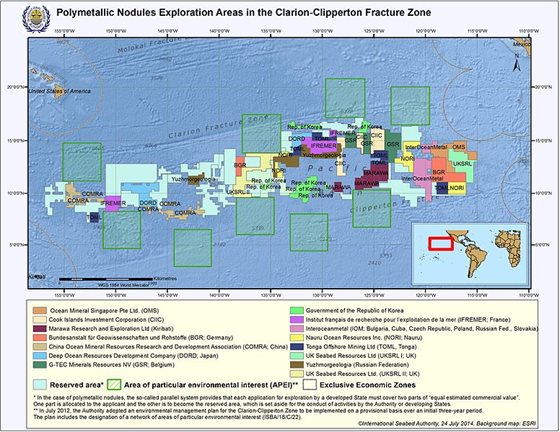A privately-held Canadian start-up is pioneering a new source of critical base metals to meet global demand for scaling up electric vehicles and energy storage.

Deep in the frigid North Pacific Ocean, in an area as wide as the U-S, billions of indiscernible potato-sized rocks are scattered about the ocean floor. But immense treasure lurks within these ‘spuds of the sea’. The lumpy, black-brown balls are chock full of cobalt, nickel, copper, and manganese – valuable minerals that are crucial for electronics, the aerospace industry, and evolving green technologies…such as electric vehicles (EVs) and solar panels.
As the world moves further and further away from fossil fuels, it needs metals to harness and store renewable energy. A lot of metal. And a Canadian company, among others around the globe, is eyeing the vast, untapped minerals in the high seas as the way to a sustainable future, especially seabed rocks that require no drilling, blasting or digging. And as the world’s population increases, demand is now outstripping the production from mines on land for some important elements.
DeepGreen Metals Inc. wouldn’t so much as mine the clumpy deposits, called polymetallic nodules, as scoop them up. The Vancouver-based company and its subsidiary, Nauru Ocean Resources Inc., are focused on harvesting the Clarion-Clipperton Zone (CCZ) – a mineral-rich, 4,000-kilometre swath of the Pacific that stretches from Hawaii to Mexico. At depths of around 4,000 to 6,000 metres, the nodules lie in a shallow layer of mud on the seafloor.
 (Click image to enlarge)
(Click image to enlarge)
The company recently announced it had successfully derived an alloy of base metals from polymetallic nodules found on the deep ocean floor. They say they intend to be “the world’s first zero tailings miner by retrieving polymetallic base metal nodules from the seafloor.” In lab tests the nuggets have been treated with calcination and smelting techniques that produced iron-rich alloy nuggets with payable amounts of nickel, copper and cobalt.
So is deep sea mining sustainable and a viable green mining solution to the environmentally-damaging effects of terrestrial operations? Maybe.
Those leading the global rush to position gigantic mining machines thousands of metres below the ocean surface say the extraordinary abundant and high-grade underwater ores mean the environmental impacts will be far lower than on land. But
critics say exotic and little-known ecosystems in the deep oceans could be destroyed and must be protected.
To date, dozens of exploration licences have already been granted for huge tracts of ocean floor and world leaders,
including the G7 nations, have their eyes on the prize. But the rules to ensure the responsible exploitation of this global resource are still being written.
Vast and Valuable Mineral Resources Beneath
Deep-sea mining is targeting three types of deposits all of which are formed over thousands to millions of years. Polymetallic nodules, rich in manganese, nickel, copper and cobalt, and containing platinum and tellurium, form at extreme depths of 4,000 to 6,000 metres, as metals precipitate from seawater. At hydrothermal vents, black smokers discharge hot (350 C), metal-rich fluids that can accumulate to form deposits containing copper and often gold, silver, zinc, and lead. Crusts form on the slopes of some seamounts that are rich in cobalt, manganese, iron, copper, nickel and platinum.
Modern technological and industrial societies need such metals for everything from cell phones to aircraft engines. Indeed, any move to alternative energy sources must consider the
critical and strategic mineral supply and the security of the supply chain. A current challenge for many countries is the
negotiation of those supplies from terrestrial sources.
This past weekend, CBS 60 Minutes did a deep dive into the challenges that lie ahead for this nascent industry – responsibly tapping polymetallic nodules in the high seas to supply critical metals for the green transition and other strategic uses.
Canada’s ambitious goals of global environmental leadership beyond our own continental shelf should provide the incentive to ensure that if deep-sea mining proceeds, it is in an environmentally sustainable manner.